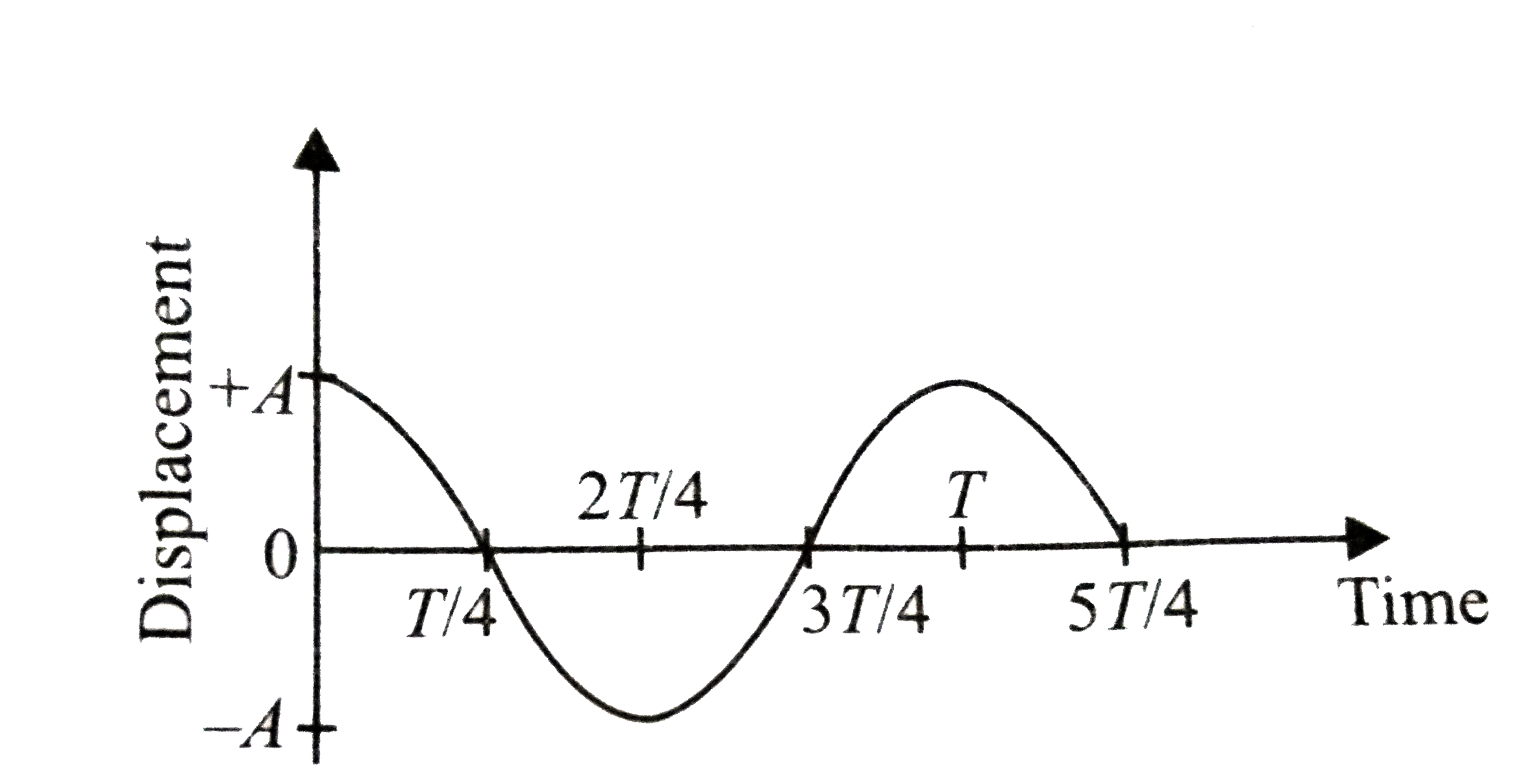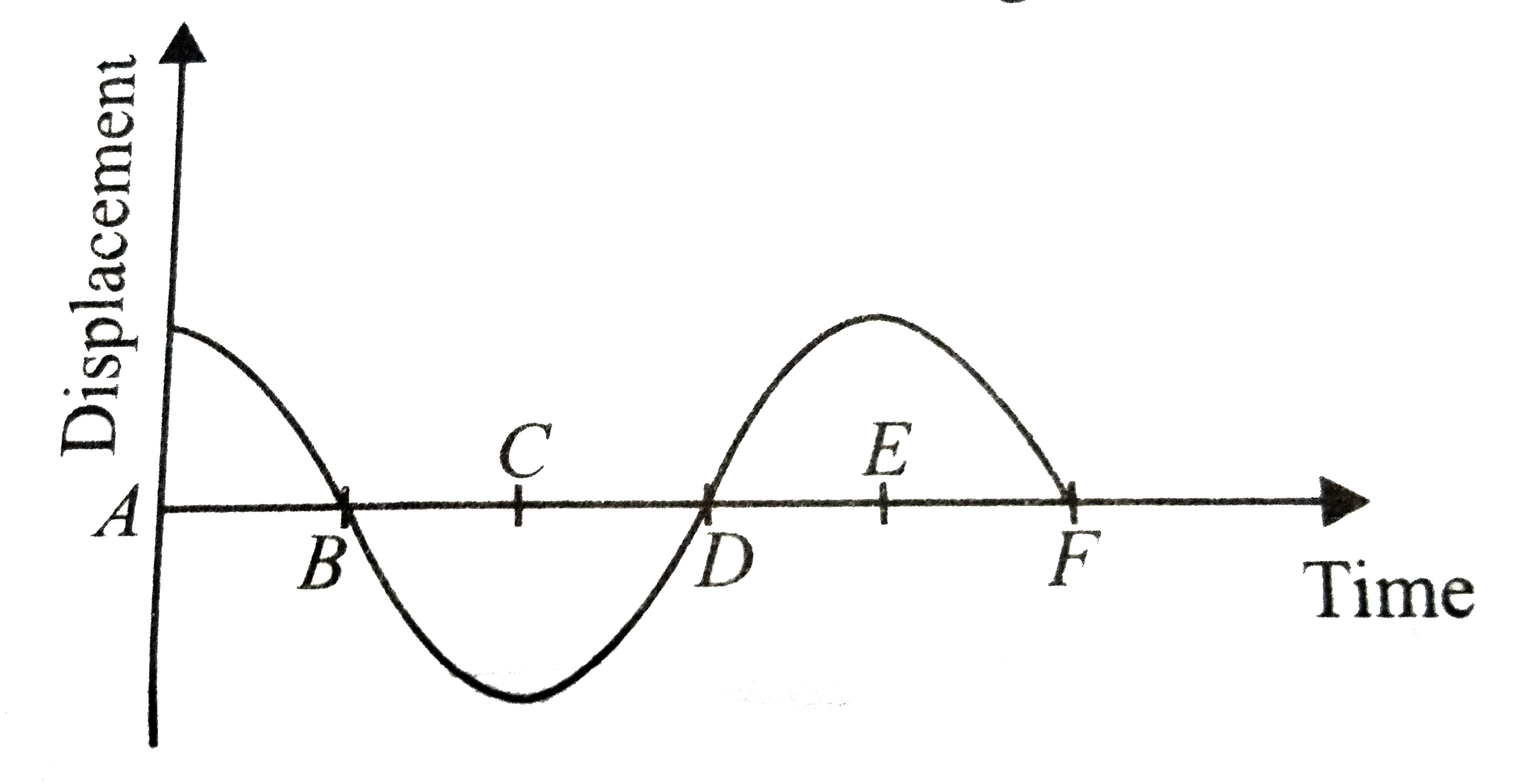Complete Solutions to Velocity And Acceleration In Simple Harmonic Motion of chapter OSCILLATIONS of Class 11 book with complete answers and questions
| Class 11 | PHYSICS |
| Chapter | OSCILLATIONS |
| NCERT FINGERTIPS | Velocity And Acceleration In Simple Harmonic Motion |
| Number Of Questions | 18 |
| Academic Year | 2023-24 |
In an SHM, x is the displacement and a is the acceleration at time t. the plot of a against x for one complete oscillation will be
View SolutionWhich one of the following statement is true for the speed `v` and the acceleration a of a particle executing simple harmonic motion?
View SolutionWhich of the following relationships between the acceleration a and the displacement x of a particle executing simple harmonic motion?
View SolutionA particle executing simple harmonic motion with an amplitude A and angularr frequency `omega`. The ratio of maximum acceleration to the maximum velocity of the particle is
View SolutionThe displacement-time graph for a particle executing SHM is as shown in figure.

Which of the following statements is correct?
View Solutiondisplacement versus time curve for a particle executing SHM is is as shown in figure.

At what points the velocity of the particle is zero?
View SolutionA particle executing SHM with time period T and amplitude A. The mean velocity of the particle averaged over quarter oscillation, is
View SolutionA particle is in linear simple harmonic motion between two points. A and B, 10 cm apart (figure.) take direction from A to B as the positive direction and choose the correct statements.

AO= OB= 5cm
BC=8cm
View SolutionA particle executing SHM. The phase difference between velocity and displacement is
View SolutionA particle executing SHM. The phase difference between acceleration and displacement is
View SolutionA mass attached to a spring is free to oscillate, with angular velocity `omega`, in a horizontal plane without friction or damping. It is pulled to a distance `x_(0)` and pushed towards the centre with a velocity `v_(0)` at time `t=0`. Determine the amplitude of the resulting oscillations in terms of the parameters `omega, x_(0)and v_(0)`.
View SolutionThe piston in the cylinder head of a locomotive has a stroke (twice the amplitude) of 1.0m. If the piston moves with simple harmonic motion with an angular frequency of `200rev//`min., what is its maximum speed ?
View SolutionA particle executing SHM according to the equation `x=5cos(2pit+(pi)/(4))` in SI units. The displacement and acceleration of the particle at t=1.5 s is
View SolutionA point mass oscillates along the x-axis according to the law `x=x_(0) cos(moegat-pi//4). If the acceleration of the particle is written as `a=A cos(omegat+delta), the .
View SolutionThe `x-t` graph of a particle undergoing simple harmonic motion is shown in figure. Acceleration of particle at `t = 4//3 s` is

View SolutionThe displacement of a particle executing simple harmonic motion is given by
`x=3sin(2pit+(pi)/(4))`
where x is in metres and t is in seconds. The amplitude and maximum speed of the particle is
View SolutionA particle executes SHM of period 12s. Two sec after it passes through the centre of oscillation, the velocity is found to be 3.142 cm `s^(-1)` fin dht amplitude and the length of the path.
View SolutionA particle executing simple harmonic motion with an amplitude 5 cm and a time period 0.2 s. the velocity and acceleration of the particle when the displacement is 5 cm is
View Solution
Velocity And Acceleration In Simple Harmonic Motion questions and complete solutions for chapter OSCILLATIONS of NCERT FINGERTIPS PHYSICS (HINGLISH) of Class 11
All Exercises from NCERT FINGERTIPS Class 11 PHYSICS OSCILLATIONS
- Assertion And Reason
- Damped Simple Harmonic Motion
- Energy In Simple Harmonic Motion
- Exemplar Problems
- Force Law For Simple Harmonic Motion
- Forced Oscillation And Resonance
- Higher Order Thinking Skills
- MCQs
- NCERT Exemplar
- Periodic And Oscillatory Motions
- Simple Harmonic Motion
- Simple Harmonic Motion And Uniform Circular Motion
- Some Systems Executing Simple Harmonic Motion
- Velocity And Acceleration In Simple Harmonic Motion